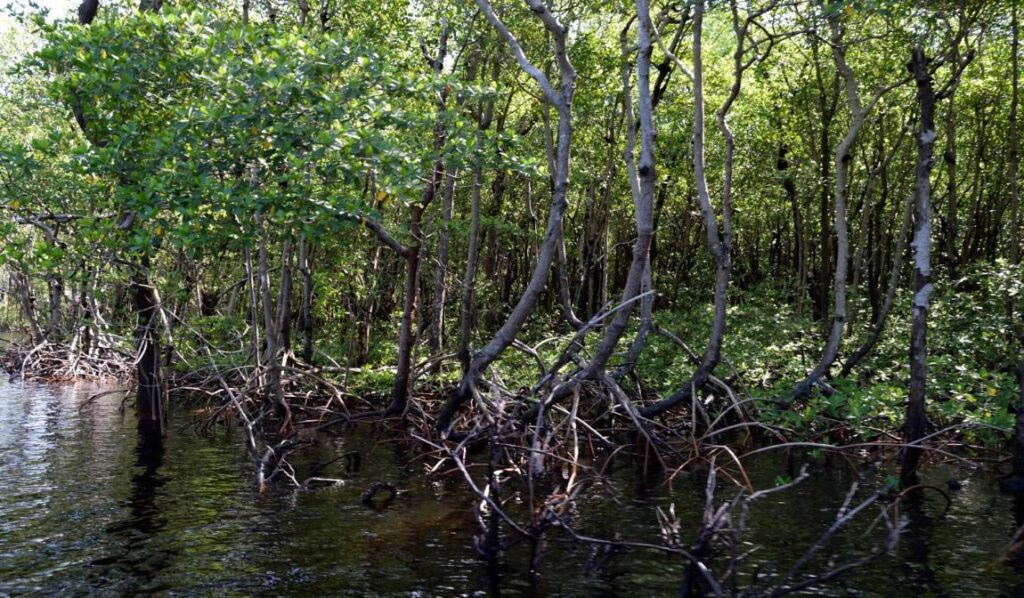The global loss of mangroves over the past century has been dramatic. The International Union for Conservation of Nature (IUCN) has listed mangroves as “threatened” for the past fifteen years.12 Yet, mangroves are nature’s precious gems of biodiversity and coastal ecosystems.
Why Mangroves?
Mangroves are also one of the best sequesterers and facilitators of carbon storage on the planet. Mangrove forests have been scientifically verified to sequester and store up to four times13 the amount of carbon as compared to Amazon forests and up to ten times14 the amount stored in terrestrial forests and with a significantly lower rate of “leakage” or loss of carbon sequestration benefits as a consequence of wildfires.
Mangroves also provide protective environments for fish nurseries and shellfish and are known to improve water quality and salinity due to their unique salt-tolerant characteristics. They protect coastal areas and human populations from flooding associated with storms and surges and their unique root system helps prevent erosion. And even as seawater levels rise, mangroves, in established forests, will self-propagate and migrate to more inland areas.
The aboveground and waterline flora provide nesting and protection for birds, lizards and snakes, while the below waterline roots provide protection for fish, mollusks, crabs and marine mammals.

This Photo by Unknown Author is licensed under CC BY-SA
Mangroves, supporting the fish, shellfish and crabs, in turn provide economic benefits to the local economies. Expanding on this benefit, the vast majority of ‘shellfishers’ in Ghana and West Africa are women. They are also the majority population for fish processing and marketing.
Direct evidence of the economic power of the mangroves was demonstrated in the Densu Protected Area west of Accra, which experienced near total destruction and loss of the native mangroves. Human activity from the local community devasted the mangrove population. Almost the entire fishing industry for that community was lost by 2015. The community members had not understood the interdependence of the fish and shellfish populations to the mangroves. However, recent initiatives supported by the University of Rhode Island and USAID helped to restore a significant portion of the mangrove population and provided ecosystem education and resources to the community.15 This, in turn, led to a marked increase in fish and oyster stocks.
Positive outcomes were also demonstrated in Senegal following a mangrove reforestation project that engaged members of 450 villages who helped replant over 10,000 hectares of mangroves between 2009 and 2012.16
A follow up study conducted ten years later determined that 95% of the community members surveyed reported improvements in livelihoods because of the mangrove reforestation. For biodiversity, significant improvements in shellfish and fish stocks were reported as the primary positive outcome. The fish stocks were reported as improved by 70% of the villages and estimated to aggregate to an annual increase in catches of 4,200 tons.16
Social and human benefits were notable as well. “Communities and households mentioned positive impacts on social mobilization, awareness, collective dynamic, confidence building, experience, technical knowledge and proudness.”16
These documented results inspire Standard Blue and its partners to protect and restore mangrove forests as a critical and viable climate mitigation solution while supporting economic development for Ghana and West Africa.



